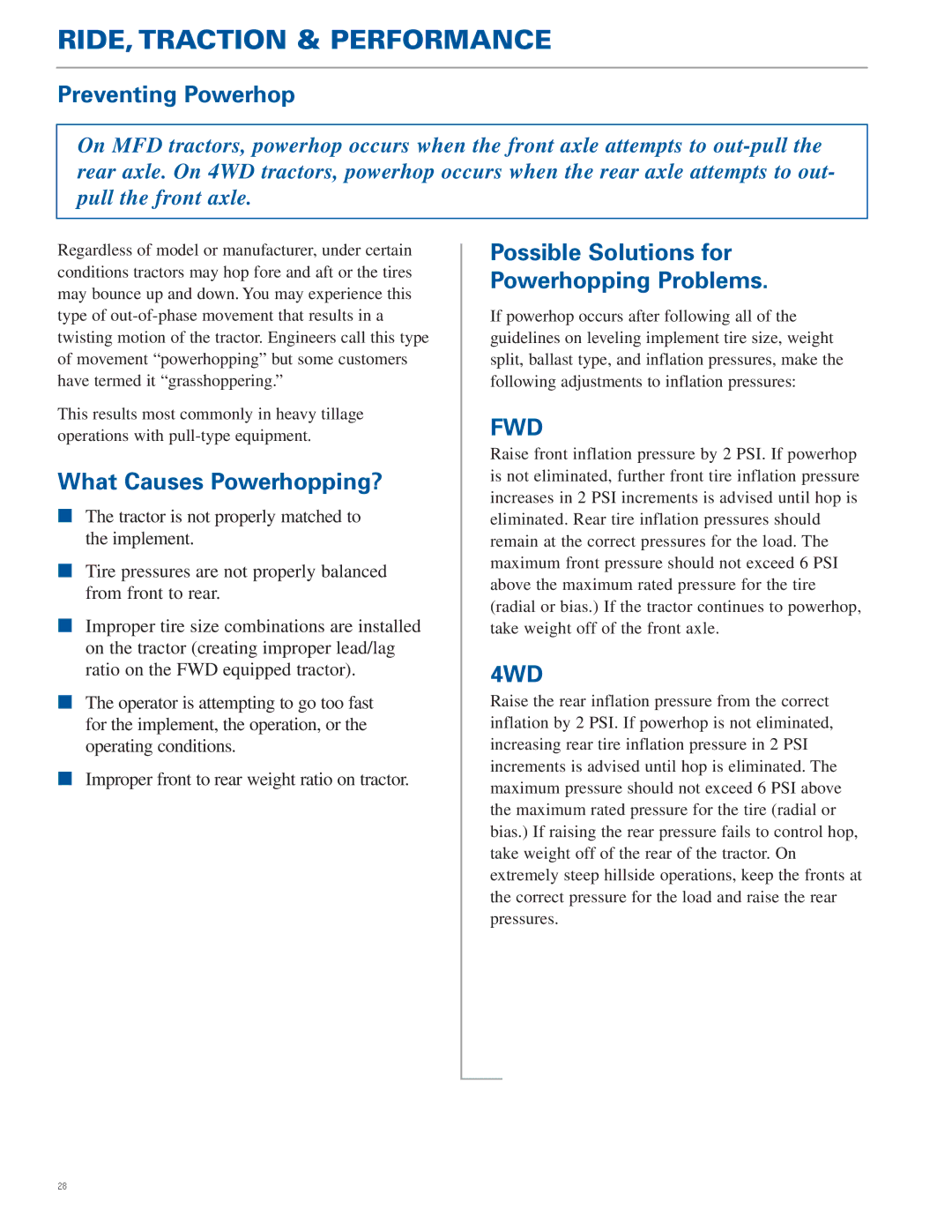
RIDE, TRACTION & PERFORMANCE
Preventing Powerhop
On MFD tractors, powerhop occurs when the front axle attempts to
Regardless of model or manufacturer, under certain conditions tractors may hop fore and aft or the tires may bounce up and down. You may experience this type of
This results most commonly in heavy tillage operations with
What Causes Powerhopping?
The tractor is not properly matched to the implement.
Tire pressures are not properly balanced from front to rear.
Improper tire size combinations are installed on the tractor (creating improper lead/lag ratio on the FWD equipped tractor).
The operator is attempting to go too fast for the implement, the operation, or the operating conditions.
Improper front to rear weight ratio on tractor.
Possible Solutions for
Powerhopping Problems.
If powerhop occurs after following all of the guidelines on leveling implement tire size, weight split, ballast type, and inflation pressures, make the following adjustments to inflation pressures:
FWD
Raise front inflation pressure by 2 PSI. If powerhop is not eliminated, further front tire inflation pressure increases in 2 PSI increments is advised until hop is eliminated. Rear tire inflation pressures should remain at the correct pressures for the load. The maximum front pressure should not exceed 6 PSI above the maximum rated pressure for the tire (radial or bias.) If the tractor continues to powerhop, take weight off of the front axle.
4WD
Raise the rear inflation pressure from the correct inflation by 2 PSI. If powerhop is not eliminated, increasing rear tire inflation pressure in 2 PSI increments is advised until hop is eliminated. The maximum pressure should not exceed 6 PSI above the maximum rated pressure for the tire (radial or bias.) If raising the rear pressure fails to control hop, take weight off of the rear of the tractor. On extremely steep hillside operations, keep the fronts at the correct pressure for the load and raise the rear pressures.
